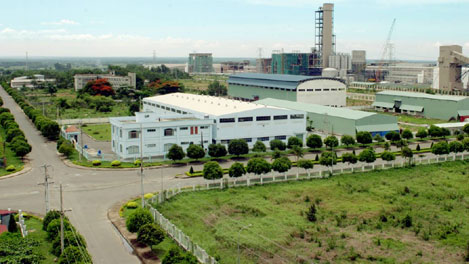
Despite Vietnam experiencing a period of positive economic growth towards the end of 2013, the National Financial Supervision Commission (NFSC) predicts local businesses will continue to face tough challenges in the coming year due to their tight budgets.
Despite Vietnam experiencing a period of positive economic growth towards the end of 2013, the National Financial Supervision Commission (NFSC) predicts local businesses will continue to face tough challenges in the coming year due to their tight budgets.
The NFSC reports consumers’ purchasing power has not much improved, with the consumer price index (CPI) in November increasing by only 0.34% compared to the previous month - a record low since 2009.
The Commission attributes the modest growth to a weak consumer demand in 2013 and the impact of adjustments in the prices of public services and essential goods. However, this year’s inflation rate will be below 6.3% in 2013, lower than last year’s.
Obstacles to production
Industrial production has remarkably improved over the last few months of this year, but there remain obstacles to overcome. The Index of Industrial Production (IIP) in 2013 is estimated at 5.8%, almost the same as in 2012, but lower than the previous two years. The 11-month IIP already hit 5.6%, or 0.5% higher than in the same period last year.
 |
The General Statistics Office (GSO) has announced that Vietnam’s 11-month IIP was 16.2% higher than last year’s corresponding period figure, with the purchasing managers’ index (PMI) earning more than 50 points in October thanks to an increase in new export orders.
The State-owned sector has slightly increased by 3.6% in export revenue, but the direct foreign investment (FDI) sector by 23.5%.
Improvements in the local production sector have led to an increase in imports, particularly of machinery and equipment, and a drop in the number of suspended businesses while new businesses are taking shape.
In fact, the national economy is still in a bind as credit growth remains at a low level (only 7.18% by October – or 60% of the year’s set target), with small-and-medium-sized enterprises (SMEs) seeing a minus credit growth.
Budget collection in the past 11 months was about VND701,760 billion, or 86% of the set target for the whole year, while the budget overspending might account for 5.3% of GDP, or 0.5% higher than expected. It seems budget collection in both medium and long-term periods are below par.
Gaining foreign investor confidence
Judging from improvements in inflation control and macroeconomic stabilisation, along with a sharp increase in FDI inflows since early this year, many foreign investors are still interested in the local market.
Over the past 11 months, the amount of FDI reached US$20.82 billion, up 54.2% from a year earlier. About US$10 billion was already disbursed, 5.5% higher than in the same period last year, contributing to ensuring a stable supply of foreign currency as we;; as stabilising the foreign exchange rate.
Regarding the local monetary market, the NFSC is hopeful that the State Bank of Vietnam (SBV) and commercial banks will further focus on settling bad debts to help businesses iron out snags and get easier access to bank loans.
The SBV’s statistics show that by September, credit organisations had restructured about VND300,000 billion in debts, accounting for 10% of the total debt outstanding, including around VND101,000 billion through preventive funds of credit organizations between 2012 and September 2013.
The central bank has warned that about 60% of debts are likely to turn into bad debts if they are not restructured.
By November 15, 2013, the Vietnam Asset Management Company (VAMC) had dealt with bad debts worth VND17,300 billion. It is expected to settle another VND30,000-35,000 billion by the end of this year.
The international payment sheet in 2013 is forecast to present a surplus of US$1.5-2 billion. This is the second consecutive year that Vietnam has produced a surplus thanks to rising overseas remittances and trade revenues.
(Source:VOV)





